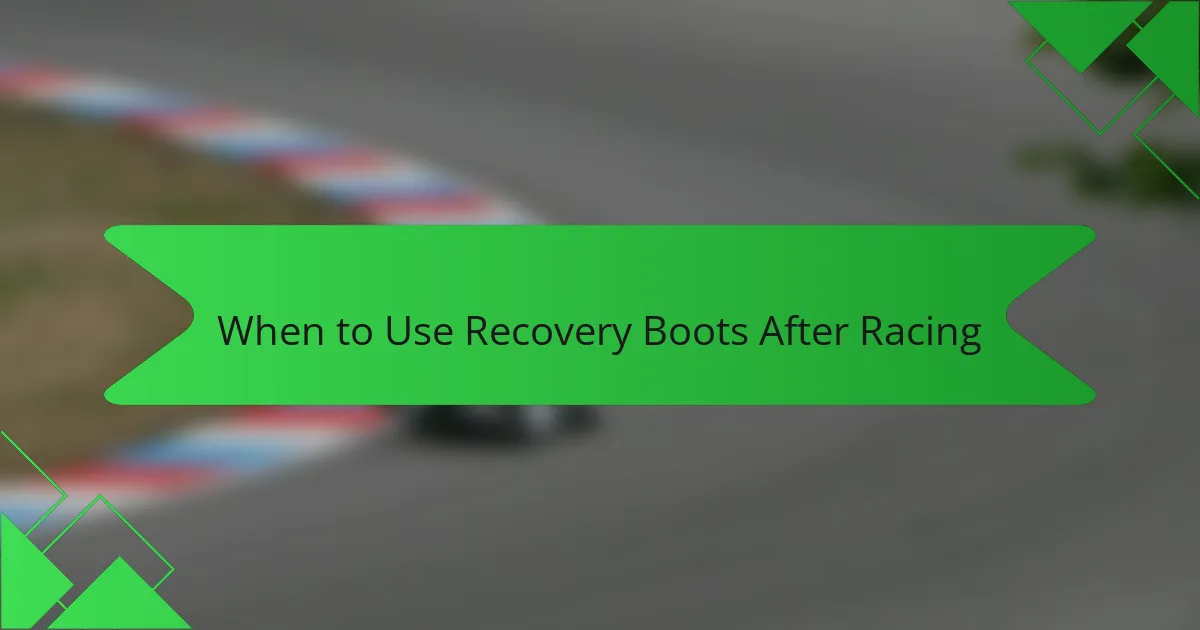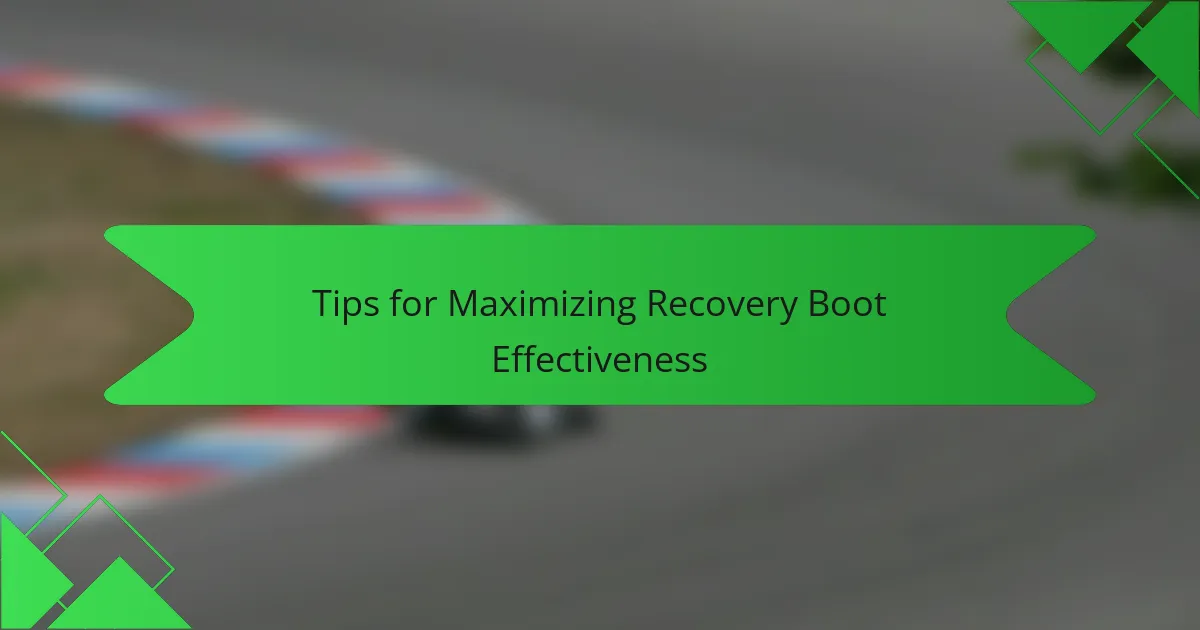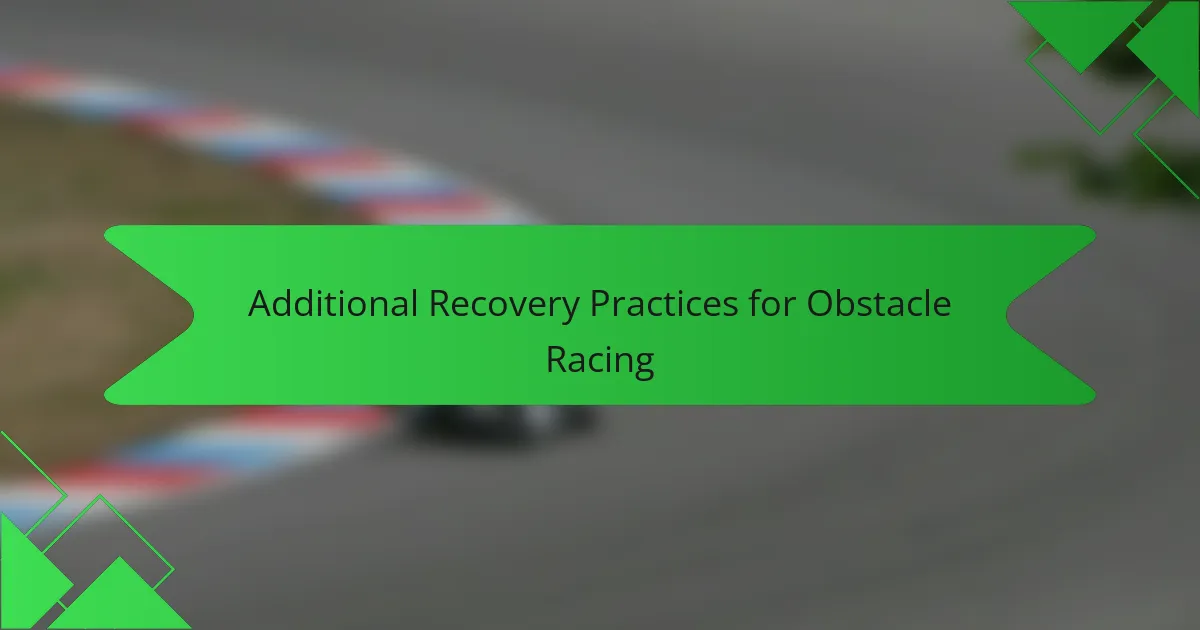Key takeaways
- Recovery boots utilize compression therapy to enhance blood flow, reduce swelling, and speed up muscle recovery after physical activities like obstacle racing.
- Using recovery boots within an hour post-race significantly decreases muscle soreness and aids in faster healing.
- Preparing properly by cleaning legs, finding a comfortable space, and setting time aside can maximize the effectiveness of recovery boots.
- Combining recovery boots with practices like active stretching and foam rolling enhances overall recovery and muscle flexibility.

What Are Recovery Boots
Recovery boots are inflatable sleeves that wrap around your legs and use compression therapy to enhance blood flow, reduce swelling, and speed up muscle recovery. After a Mudder, my legs usually feel like they’re packed with lead, but these boots help flush out the lactic acid build-up, easing that heavy, fatigued sensation.
What I find especially helpful is how the boots mimic the natural muscle pump, which gently pushes fluid through my muscles. It’s almost like giving my legs a second chance to bounce back, which is priceless after those brutal obstacles. Here’s what recovery boots do for me:
- Improve circulation to promote faster healing
- Reduce muscle soreness and swelling
- Help prevent injury by easing tight muscles
- Provide relaxation that speeds up overall recovery
- Allow me to get back to training without extended downtime

Benefits of Recovery Boots for Racers
For me, one of the biggest benefits of recovery boots is how they dramatically cut down my soreness the day after a tough Mudder. Have you ever struggled to walk or even stand straight because your legs feel so beat up? That heavy, stiff feeling starts to fade much quicker once I slide into these boots. It’s like they gently reset my muscles overnight.
Another thing I truly appreciate is how recovery boots help me avoid lingering tightness that can turn into injuries. After pushing my body through crawling, jumping, and running, I know how important it is to give my muscles a real chance to relax and heal. These boots provide that relief, reducing swelling and stiffness that make even simple movements uncomfortable.
Lastly, there’s a mental boost I can’t overlook. Putting on the boots feels like an intentional moment of self-care, a pause to let my body recharge. Knowing that I’m actively speeding up recovery means I’m less anxious about missing training days and more confident in bouncing back stronger for the next race. Have you noticed how recovery isn’t just physical but also a mindset? For me, these boots hit both perfectly.

When to Use Recovery Boots After Racing
I usually slip into my recovery boots within an hour after crossing the finish line. It’s incredible how quickly they start easing the tightness that usually creeps in after all that running and climbing. Have you ever felt that stubborn stiffness settling in overnight? Starting soon after the race really helps me prevent that.
Sometimes, I like to use them again later in the evening, especially if my legs still feel sore from the toughest obstacles. It’s like giving my muscles a second chance to relax before bedtime, which makes a noticeable difference in how I feel the next morning. For me, timing is about catching the soreness early rather than waiting for it to become unbearable.
I’ve also found that using recovery boots right after a short break during Mudder events—when possible—can be a game changer. Even just 20 minutes can refresh my legs and prep me for whatever’s next. So, the best time? Honestly, anytime you feel your legs crying out for relief after pushing hard. Don’t ignore those signals.

How I Prepare Before Using Recovery Boots
Before slipping into my recovery boots, I always make sure to clean and dry my legs thoroughly. This simple step helps me avoid any discomfort or skin irritation, especially after the grime and sweat of a Tough Mudder. I’ve learned that taking this moment to care for my skin sets the tone for effective recovery.
Next, I like to find a comfortable spot where I can completely relax. I remember one race when I tried using recovery boots on the go, and it just didn’t work—I was too tense to let the boots do their magic. Now, I treat this time like a mini ritual, almost like a reward for pushing through those challenging obstacles.
| Preparation Step | Why It Matters |
|---|---|
| Cleaning and drying legs | Prevents irritation and ensures comfort |
| Finding a relaxed environment | Enhances effectiveness by reducing muscle tension |
| Setting aside dedicated time | Transforms recovery into a mindful ritual |

My Recovery Boot Routine After Tough Mudder
My Recovery Boot Routine After Tough Mudder
After finishing a grueling Tough Mudder, my legs always feel heavy and tight. I’ve found that slipping into my recovery boots within an hour really helps reduce swelling and speeds up muscle repair. I usually start with a gentle session of 20 minutes, adjusting the pressure to a comfortable level — it’s like giving my legs a much-needed hug after all that pounding.
| Step | Details |
|---|---|
| Timing | Begin using boots within 1 hour after the race to maximize muscle recovery |
| Duration | Session lasts between 20-30 minutes depending on soreness |
| Pressure Settings | Start with low pressure, gradually increasing to avoid discomfort |
| Frequency | Use boots daily for 2-3 days post-event to keep inflammation down |
| Additional Tips | Hydrate well before and after sessions to aid circulation |

Tips for Maximizing Recovery Boot Effectiveness
One strategy I’ve found invaluable for boosting recovery boot effectiveness is timing. Using the boots within the first hour after a Tough Mudder really helped reduce the soreness I typically dread. That initial window seems crucial; it’s like giving your legs a head start to flush out fatigue before it sets in deeply.
Consistency also plays a huge role. I make it a point to use the recovery boots daily for at least 20-30 minutes over the week following the race. This routine not only speeds up healing but also keeps my legs feeling refreshed, making the thought of the next Mudder less intimidating.
- Start using recovery boots within 60 minutes post-race
- Use them daily for 20-30 minutes during the week after the event
- Adjust the pressure settings to a comfortable, firm level to avoid discomfort
- Hydrate well before and after using the boots to aid circulation
- Elevate your legs slightly during use for improved blood flow
- Combine boot sessions with gentle stretching to enhance muscle relaxation

Additional Recovery Practices for Obstacle Racing
Additional Recovery Practices for Obstacle Racing
When I’m not using my recovery boots after a Tough Mudder, I find that active stretching is crucial for loosening up tight muscles. It feels like giving my body a gentle reset, which helps prevent stiffness and keeps me ready for the next challenge. Pairing this with hydration and proper nutrition really accelerates my recovery and boosts my energy levels.
I also swear by foam rolling to target those stubborn knots that the boots can’t fully release. It’s a bit intense at first, but pushing through that discomfort always leaves me feeling lighter and more mobile. In obstacle racing, these small rituals often make the difference between sore days and being race-ready again quickly.
| Recovery Practice | Benefits |
|---|---|
| Recovery Boots | Improves circulation and reduces swelling through compression, speeding up muscle recovery |
| Active Stretching | Enhances muscle flexibility and reduces stiffness, preparing muscles for future activity |
| Foam Rolling | Breaks down muscle knots and promotes tissue mobility, improving overall muscle function |
| Hydration & Nutrition | Supports muscle repair and replenishes energy stores, essential for sustained recovery |
